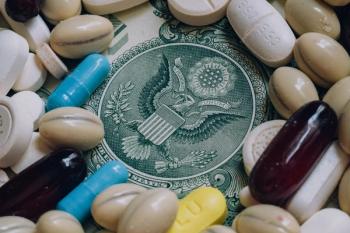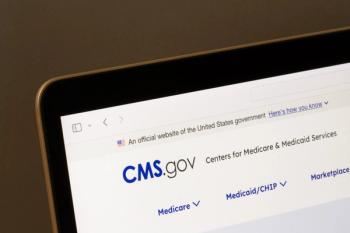
Pharmacists’ impact on public health
It's cheaper to prevent chronic diseases than to treat them. Through promotion of health literacy, medication adherence, health screenings, and tertiary care, pharmacist can have a real impact on public health.
It is much more cost-effective to prevent chronic diseases than to treat them after they occur. Most chronic diseases could be prevented through lifestyle and environmental changes, according to the U.S. Centers for Disease Control and Prevention (CDC).1
Reducing adult smoking rates by 1% could result in at least 30,000 fewer heart attacks, 16,000 fewer strokes, and $1.5 billion saving over five years, according to the CDC.1 Also, if one-tenth of all Americans began a walking program, $5.6 billion could be saved in the treatment of heart disease.1 In addition, routine childhood vaccinations result in $50 billion saved annually in direct and indirect costs. 1
Public health interventions have significant economic ramifications at both the societal and individual levels. A community’s financial investment in the well-being of its members will be reflected in fewer health disparities, greater universal access to health care, and an emphasis on early health education and promotion.
As the most accessible healthcare professionals in the community, pharmacists can take the initiative to bridge the gap in these health disparities by effectively communicating with their patients and community on the topics of health literacy, smoking cessation, diabetes, lifestyle changes, and the importance of vaccinations.
Health literacy
Independent risk factors for low health literacy include ethnicity, socioeconomic status, older age, and limited education, according to the National Assessment of Adult Literacy.2 Pharmacists who are trained to recognize and properly communicate with a patient who has low health literacy will positively impact public health through improved population health outcomes and, ultimately, decreases in mortality and healthcare costs.
When patients come into the pharmacy to pick up their medications, the pharmacist is the most appropriate healthcare provider to ensure proper understanding of medication use and to reinforce the benefits of adherence. Pharmacists can bridge communication gaps that exist as a result of cultural differences and health literacy disparities among patients.
Pharmacists have the training and knowledge to assess and address a patient’s health needs. They have an obligation to focus on the patient and maintain impeccable standards of quality and safety within their pharmacy practice. Pharmacists can help bridge the health-disparities gap by addressing medication adherence and lifestyle modifications, specifically with patients who have chronic diseases.
Causes of nonadherence to medication regimens include side effects, patients’ inability to understand the benefits of the medication, and pill burden. Pharmacists have the opportunity to expand their clinical roles beyond the perceived scope of practice and engage patients through services targeting improved adherence and reduced healthcare costs. can model these methods by taking an active role in public health through primary, secondary, and tertiary prevention.
Health promotion/education
Primary prevention includes measures taken to either eliminate patients’ risk factors or increase their resistance to disease. Pharmacists can educate their patients about interventions that require no treatment, such as changes in lifestyle, nutrition, and their environment. Encouraging people to protect themselves from the sun’s ultraviolet rays is one example.
Health education about specific disease states will empower patients to take a more proactive approach to their healthcare. To prepare to educate patients, pharmacists can take local cultural literacy courses relevant to the populations they serve. Culturally relevant educational materials provided in specific languages or with graphic representations will reinforce key concepts and messages that the pharmacist seeks to convey.
An equally important primary prevention service is vaccination education. More than 50,000 U.S. adults and 300 children die annually from vaccine-preventable diseases or their complications, Immunizations, including those administered by pharmacists, help prevent an estimated 14 million cases of vaccine-preventable diseases and 33,000 cases of death.3
One of the major objectives for the U.S. Department of Health and Human Services Healthy People 2010 initiative, a nationwide health-promotion and disease-prevention program, is to improve immunization rates among individuals in the United States.4 Pharmacists are capable of identifying at-risk populations and encouraging such patients to consider the advantages of receiving vaccinations in the pharmacy. The most relevant vaccinations are patients’ yearly flu shot as well as pneumococcal and zoster vaccine for shingles. Currently, all 50 states allow pharmacists to administer vaccinations.5
Rehabilitative care
Tertiary prevention targets the person who already has symptoms of the disease. The goal is to prevent damage and pain from the disease, slow down the disease progression, or even prevent the disease from causing other complications.6
Tertiary prevention may slow the course of some progressive diseases and prevent or delay many complications associated with chronic diseases such as arthritis, asthma, and diabetes. A pharmacist who knows the complications connected with each disease state can intervene.
National Eye Institute research has shown that patients who maintain tight control of their blood sugar levels have a better chance to delay or prevent the devastating complications of diabetic retinopathy.7 When a pharmacist urges a patient to pay closer attention to hemoglobin A1c levels and blood sugar readings, the pharmacist is practicing tertiary prevention.
With smoking cessation, pharmacists are ethically obligated to offer information and assistance to any patient currently smoking. Pharmacists should recognize the patients who would most benefit from quitting and focus their efforts on these individuals. Patients who fit this description have diabetes, chronic obstructive pulmonary disease, asthma, and cancer. Taking the time to speak and educate these populations could have a significant impact on the course of their disease.
Preventing chronic diseases is much more cost-effective than treating the diseases after they occur. The majority of chronic diseases could be prevented through lifestyle and environmental changes, according to the U.S. Centers for Disease Control and Prevention (CDC).1
Clinical care
The goal of secondary prevention is to find and treat disease early, before it becomes symptomatic or before it can be transmitted to others.6 Patients see their pharmacists more regularly than they do most other healthcare providers. Therefore, pharmacists can follow the progress of patients during the 10-minute interactions they have at least once every month, and using information that arises during the visit, they can suggest the next steps for patients to take.
Well-established clinical testing or screenings will detect risk factors such as elevated blood pressure to help in the prevention of strokes and heart attacks; finger sticks reveal elevated blood sugar levels in prediabetes; and PPD skin test detect cases of asymptomatic tuberculosis.6
By explaining the consequences associated with refusal to seek medical assistance or to adhere to medication or suggested lifestyle changes, a pharmacist can influence patients.
References
1. Trust for America’s Health. Trust for America’s Health (2008).
2. Kutner M, Greenberg E, Jin Y, et al. The health literacy of America’s adults: Results from the 2003 National Assessment of Adult Literacy (NCES 2006–483) (September 2006).
3. Institute of Medicine Report. Shaping the Future for Health - Calling the Shots: Immunization Finance Policies and Practice (June 16, 2000).
4. Immunization and Infectious Disease. Healthy People 2010.
5. States allowing pharmacists to vaccinate. Immunization Action Coalition.
6. U.S. Department of Health and Human Services. U.S. Surgeon General. The Power of Prevention, Steps to a Healthier US: A Program and Policy Perspective. Washington, DC: U.S. Department of Health and Human Services; 2003.
7. Diabetic Retinopathy. National Eye Institute - National Institutes of Health.
Johanna Sierra is a PharmD candidate. Vaiyapuri Subramaniam is associate chief consultant, Pharmacy Benefits Management Services, Department of Veterans Affairs, Washington, D.C. The views and opinions expressed in this article are those of the authors and do not necessarily reflect the opinions of the Department of Veterans Affairs.
Newsletter
Pharmacy practice is always changing. Stay ahead of the curve with the Drug Topics newsletter and get the latest drug information, industry trends, and patient care tips.





















































































































































